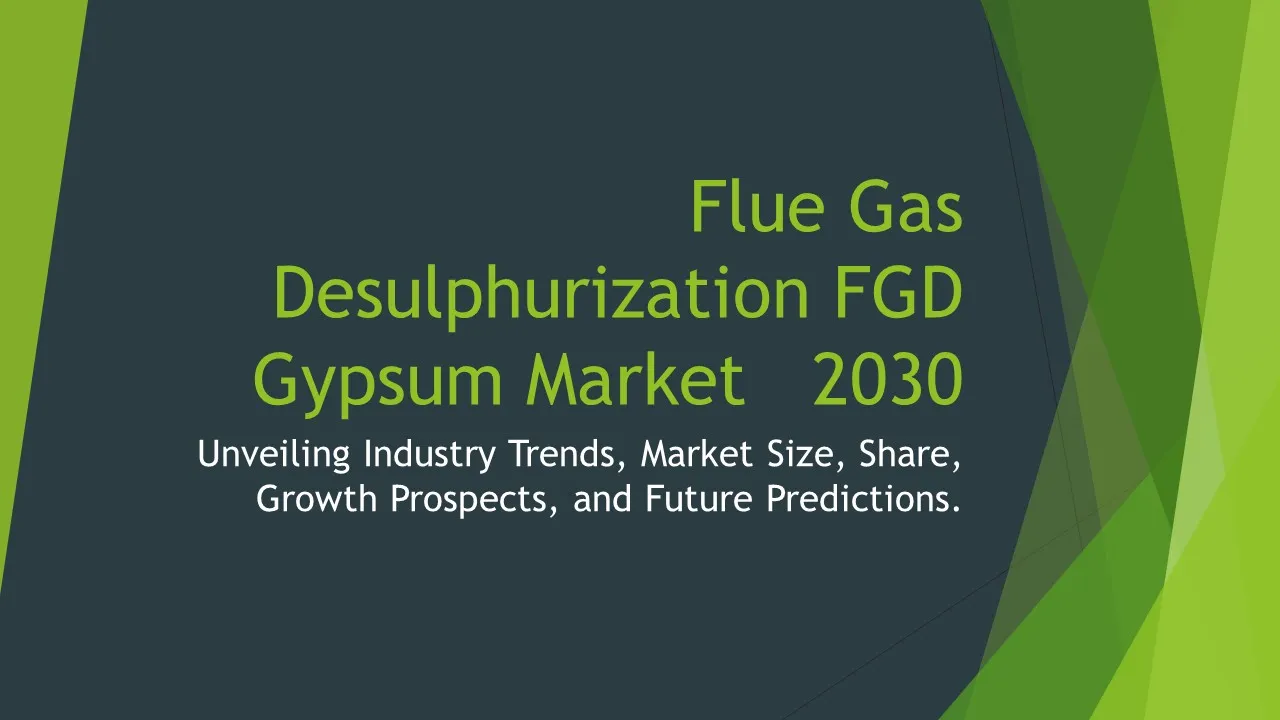Fluid Cracking Catalyst Sales
Fluid Cracking Catalyst Sales Segments - by Product Type (Zeolite Catalysts, Ultra Stable Y Catalysts, Rare Earth Metals Catalysts, High Surface Area Catalysts, Amorphous Catalysts), Application (Oil Refining, Petrochemicals, Chemical Manufacturing, Environmental Catalysts, Others), Distribution Channel (Direct Sales, Indirect Sales), Ingredient Type (Silica, Alumina, Zeolites, Metals, Chemical Additives), and Region (North America, Europe, Asia Pacific, Latin America, Middle East & Africa) - Global Industry Analysis, Growth, Share, Size, Trends, and Forecast 2025-2035
- Report Preview
- Table Of Content
- Segments
- Methodology
Fluid Cracking Catalyst Sales Market Outlook
The global Fluid Cracking Catalyst market is projected to reach approximately USD 6.5 billion by 2035, growing at a remarkable CAGR of around 5.8% from 2025 to 2035. This sustained growth trajectory is primarily attributed to the increasing demand for petroleum products and the continuous expansion of refining capacities across the globe. The rising focus on cleaner and more efficient fuel production, alongside stringent environmental regulations, further drives innovation in catalyst technology. Additionally, the advent of advanced refining processes and the growing petrochemical industry bolster the demand for high-performance catalysts, contributing significantly to market growth. As industries strive for energy efficiency and reduced emissions, fluid cracking catalysts are positioned as essential components in optimizing refinery operations and improving the overall yield of valuable products.
Growth Factor of the Market
Several factors are contributing significantly to the growth of the Fluid Cracking Catalyst Sales Market. The increasing global energy demand aligns closely with a rise in refining activities, prompting refineries to adopt advanced catalysts to enhance efficiency and output. Additionally, technological advancements in catalyst formulations and production methods are allowing for the development of more effective solutions that cater to modern refining and petrochemical processes. The growing emphasis on sustainable practices and the need to comply with environmental regulations also accelerate the shift towards high-performance catalysts, capable of reducing emissions and improving yields. Moreover, the rising competition among refiners to maximize profitability encourages investment in innovative catalyst technologies. These dynamics, combined with the evolving market landscape, present substantial opportunities for growth within this sector.
Key Highlights of the Market
- The global Fluid Cracking Catalyst market is set to achieve approximately USD 6.5 billion by 2035.
- North America leads the market due to extensive refining operations and technological innovations.
- Zeolite Catalysts currently dominate the product type segment, attributed to their superior performance characteristics.
- The oil refining application segment accounts for the largest share, driven by the increasing demand for gasoline and diesel.
- Asia Pacific is anticipated to exhibit the highest growth rate, fueled by rapid industrialization and urbanization.
By Product Type
Zeolite Catalysts:
Zeolite Catalysts are the most widely used type in the Fluid Cracking Catalyst market due to their unique structural properties and catalytic activity. These catalysts are characterized by their porous crystalline frameworks, which allow for efficient molecular sieving and selective catalytic reactions. The high thermal stability and resistance to deactivation make zeolite catalysts ideal for various refining processes, particularly in fluid catalytic cracking (FCC). Their ability to maximize the yield of valuable products from crude oil fractions further enhances their appeal in the marketplace. As the demand for cleaner fuels rises, zeolite catalysts are continuously being optimized to improve their performance in reducing harmful emissions, thereby reinforcing their dominant position in the market.
Ultra Stable Y Catalysts:
Ultra Stable Y Catalysts represent a specialized category within the Fluid Cracking Catalyst segment, known for their enhanced stability and performance in severe operating conditions. These catalysts are engineered to withstand the rigorous heat and harsh environments typical in fluid catalytic cracking units. Their superior stability helps minimize catalyst deactivation, leading to longer operational cycles and reduced replacement costs. This characteristic is particularly beneficial for refineries aiming to enhance productivity while maintaining compliance with stringent environmental standards. As the need for efficient and durable catalytic solutions continues to grow, Ultra Stable Y Catalysts are expected to see increasing adoption across refining and petrochemical applications.
Rare Earth Metals Catalysts:
Rare Earth Metals Catalysts are increasingly gaining traction in the Fluid Cracking Catalyst market, primarily due to their unique catalytic properties that enhance hydrocarbon conversion rates. These catalysts leverage the high activity and selectivity of rare earth metals, which facilitate efficient cracking reactions while minimizing the formation of undesirable by-products. The growing focus on developing cleaner fuels and the need for greater efficiency in refining operations drive the demand for rare earth metal catalysts. However, the supply chain for these metals can be volatile, which may impact pricing and availability. Despite these challenges, the overall trend towards more sophisticated catalyst formulations boosts the outlook for rare earth metals catalysts within the market.
High Surface Area Catalysts:
High Surface Area Catalysts are essential for maximizing the efficiency of fluid catalytic cracking processes. Their large surface area provides more active sites for reactions, promoting higher rates of hydrocarbon conversion. As refiners aim to optimize yield and minimize costs, the importance of high surface area catalysts becomes increasingly pronounced. These catalysts can significantly enhance the overall productivity of refining operations while also improving the quality of the end products. In light of the evolving energy landscape, the development of high surface area catalysts continues to be a focal point for research and innovation, ensuring their vital role in the future of fluid cracking technologies.
Amorphous Catalysts:
Amorphous Catalysts deliver unique advantages in specific refining applications due to their non-crystalline structure, which allows for versatile catalytic properties. These catalysts can be tailored to meet the distinct requirements of various chemical reactions, offering flexibility that is often not achievable with crystalline counterparts. Their application in fluid cracking processes is particularly beneficial for specific hydrocarbon feedstocks, allowing for improved reactivity and selectivity. While their market share may not be as significant as that of zeolite or rare earth catalysts, the growing recognition of their benefits is likely to open up new opportunities for their use in specialized applications within the refining industry.
By Application
Oil Refining:
The oil refining sector stands as the foremost application of fluid cracking catalysts, as these catalysts are crucial in converting heavy crude oil fractions into lighter, more valuable products such as gasoline and diesel. With the ongoing global demand for fuels on the rise, refiners are looking for advanced catalyst solutions that can enhance yield and product quality while minimizing environmental impact. The application of fluid cracking catalysts in oil refining not only increases efficiency but also plays a significant role in meeting regulatory standards related to emissions. As the industry continues to evolve, the role of catalysts becomes increasingly vital in refining operations, ensuring their sustained dominance in the market.
Petrochemicals:
In the petrochemical industry, fluid cracking catalysts facilitate the conversion of hydrocarbons into valuable chemical products. This sector is witnessing robust growth due to the increasing demand for various petrochemical derivatives used in plastics, fertilizers, and synthetic fibers. The versatility of fluid cracking catalysts in optimizing feedstock and enhancing reaction efficiency makes them a key component in petrochemical production processes. As manufacturers seek to improve their operational efficiency and reduce costs, the reliance on advanced catalytic solutions is expected to grow, ensuring a positive outlook for fluid cracking catalysts in this segment.
Chemical Manufacturing:
The chemical manufacturing segment also leverages fluid cracking catalysts to enhance production processes involving complex hydrocarbon transformations. Catalysts play a pivotal role in optimizing chemical reactions, improving yield, and reducing energy consumption. With the increasing complexity of chemical processes and a rising emphasis on sustainability, the incorporation of advanced fluid cracking catalysts is becoming essential. Manufacturers are increasingly adopting innovative catalyst technologies to streamline operations and achieve higher efficiency in chemical production, further propelling the demand for fluid cracking catalysts in this application.
Environmental Catalysts:
Environmental catalysts represent a growing application for fluid cracking catalysts, particularly as industries face increasing pressure to comply with stringent environmental regulations. These catalysts are designed to reduce harmful emissions during hydrocarbon processing, contributing to cleaner air and minimizing environmental impact. As awareness of environmental issues rises globally, the demand for catalysts that can facilitate compliance with regulatory standards is growing. The development of innovative environmental catalysts that promote cleaner production processes will continue to support the growth of fluid cracking catalysts in this segment as industries seek to adopt more sustainable practices.
Others:
The "Others" category encompasses various niche applications of fluid cracking catalysts that do not fit neatly into the primary segments. This may include specialized industrial processes or emerging applications in renewable fuels and alternative energy sources. As the energy landscape shifts towards sustainability, the exploration of innovative uses for fluid cracking catalysts is expected to expand. This segment provides opportunities for catalyst manufacturers to diversify their offerings and tap into new markets, thus contributing to the overall growth of the fluid cracking catalyst market.
By Distribution Channel
Direct Sales:
The direct sales channel is a predominant method for distributing fluid cracking catalysts, allowing manufacturers to engage directly with clients, particularly large refiners and petrochemical producers. This approach fosters stronger relationships, enabling manufacturers to tailor solutions to specific customer needs. Direct sales also facilitate better communication regarding technical specifications, product support, and after-sales services. As companies seek to optimize their supply chains and establish long-term partnerships, the direct sales model is likely to remain a significant avenue for fluid cracking catalyst distribution. Such a strategy not only enhances customer satisfaction but also strengthens brand loyalty in a competitive market landscape.
Indirect Sales:
Indirect sales channels play a crucial role in expanding the reach of fluid cracking catalysts to a wider audience, including smaller refiners and specialized chemical manufacturers. Through distributors, agents, and resellers, manufacturers can leverage established networks to penetrate markets that may be otherwise challenging to access. This method allows for greater flexibility in logistics and customer service, as intermediaries can provide localized support and expertise. The growing trend towards outsourcing and multi-channel distribution strategies will likely enhance the significance of indirect sales in the fluid cracking catalyst market, thereby contributing to increased accessibility and market penetration.
By Ingredient Type
Silica:
Silica is an essential ingredient in the formulation of many fluid cracking catalysts, serving as a support material that enhances the catalyst's structural integrity and performance. Its high surface area and porosity facilitate efficient hydrocarbon conversion processes, making it a critical component. The versatility of silica allows for its incorporation into various catalyst formulations, contributing to their overall efficacy. As refiners continuously seek to improve yields and reduce costs, the formulation of advanced catalysts with optimized silica content is likely to remain a focus area, thus fortifying its role in the fluid cracking catalyst market.
Alumina:
Alumina is another vital ingredient used widely in the development of fluid cracking catalysts, primarily due to its beneficial properties such as thermal stability and high surface area. Its ability to provide a stable framework for active catalytic sites makes it indispensable for enhancing catalyst performance. In recent years, the demand for alumina-based catalysts has surged, driven by advancements in catalytic technology and the growing need for efficient refining processes. As industries strive for improved catalytic solutions, the incorporation of high-quality alumina in catalyst formulations will be paramount in ensuring competitive performance in the market.
Zeolites:
Zeolites are a key ingredient in many fluid cracking catalysts, known for their unique crystalline structure and exceptional catalytic properties. Their unique framework allows for selective adsorption and reaction of hydrocarbon molecules, leading to enhanced conversion rates and improved product yields. As the demand for cleaner fuels and efficient refining processes intensifies, the adoption of zeolite-based catalysts is expected to grow. Manufacturers are continuously researching and developing innovative zeolite formulations to meet the evolving needs of the market while ensuring compliance with environmental regulations.
Metals:
Metals play a significant role in fluid cracking catalysts, as they contribute to enhancing catalytic activity and selectivity. Precious metals such as platinum and palladium are often used in small quantities to boost the efficiency of cracking processes. The integration of metal components into catalyst formulations allows for the optimization of specific reactions, enhancing product quality and yield. As refiners focus on achieving operational excellence and reducing emissions, the strategic use of metals in catalysts will be crucial. The ongoing pursuit of new metal-based catalyst technologies will likely drive advancements in this area, further expanding the market’s potential.
Chemical Additives:
Chemical additives are increasingly being incorporated into fluid cracking catalyst formulations to enhance performance, stability, and selectivity. These additives can optimize the catalyst's properties, enabling it to function effectively under harsh operating conditions. The growing emphasis on efficiency and sustainability in refining processes drives the demand for advanced chemical additives that can contribute to improved catalyst performance. As manufacturers continue to innovate and explore new combinations of ingredients, the role of chemical additives in fluid cracking catalysts will become more prominent, shaping the future landscape of the market.
By Region
The regional analysis of the Fluid Cracking Catalyst market reveals distinct dynamics and growth patterns across different geographical areas. North America is currently one of the leading markets, driven by the presence of major refining operations and a robust petrochemical industry. The region’s focus on technological advancements and productivity enhancements in refining processes has resulted in a substantial demand for fluid cracking catalysts. As of 2023, the North American market is estimated to account for approximately 30% of the global share, with an anticipated CAGR of around 5.2% during the forecast period. This growth is bolstered by the ongoing investment in refining infrastructure and the continuous evolution of catalyst technologies to meet regulatory standards.
In contrast, the Asia Pacific region is projected to experience the highest growth rate, estimated at 6.5% CAGR during the same forecast period. The rapid industrialization, urbanization, and increasing energy demands in countries such as China and India contribute significantly to this trend. The region's expanding refining capacities and the rising focus on cleaner fuel production are expected to propel the adoption of advanced fluid cracking catalysts. The growing petrochemical sector in Asia Pacific further enhances the market’s outlook, making it a vital area for growth potential. While Europe and Latin America also present opportunities, their growth rates are anticipated to be more moderate compared to North America and Asia Pacific, primarily due to established refining infrastructures and varying regulatory landscapes.
Opportunities
The Fluid Cracking Catalyst market is poised for numerous opportunities as the global energy landscape shifts towards sustainability and cleaner fuel production. With increasing governmental regulations on emissions and environmental standards, refiners are under constant pressure to optimize their operations and minimize their environmental footprint. This situation opens up a wealth of opportunities for catalyst manufacturers to innovate and develop advanced solutions that cater to these regulatory requirements. Moreover, the ongoing research and development in catalyst technology, focusing on enhancing performance and durability, will provide manufacturers with the chance to introduce next-generation products that meet the evolving needs of the refining industry. The shift towards biofuels and renewable energy sources also presents a significant opportunity for fluid cracking catalyst producers to diversify their product offerings and explore new markets.
Another notable opportunity lies in the digital transformation of the refining sector, where advanced data analytics and process optimization techniques can enhance catalyst performance and operational efficiency. As refiners adopt smart technologies, the integration of fluid cracking catalysts with data-driven insights can lead to improved decision-making and enhanced processing capabilities. Additionally, collaboration between catalyst manufacturers and refiners can foster innovation and the development of tailored solutions that address specific operational challenges. By capitalizing on these opportunities, companies within the fluid cracking catalyst market can position themselves as leaders in the evolving landscape of the energy sector, ensuring sustained growth and competitiveness in the coming years.
Threats
Despite the promising growth prospects, the Fluid Cracking Catalyst market faces several threats that could impact its development. One of the primary threats is the volatility in raw material prices, particularly for critical ingredients such as rare earth metals or precious metals used in catalyst formulations. Fluctuations in supply and demand for these materials can lead to increased costs, impacting profit margins for manufacturers and ultimately affecting pricing strategies. Furthermore, geopolitical tensions and trade restrictions can disrupt supply chains, hindering the availability of vital raw materials and components necessary for catalyst production. As companies navigate these challenges, the ability to maintain cost-effective operations while ensuring consistent product quality will be critical for success in the market.
An additional threat arises from the rapid advancements in competing technologies and alternative processes that may reduce the reliance on traditional fluid cracking methods. Innovations in refining technology, such as hydrocracking or biorefining, could potentially displace the need for conventional fluid cracking catalysts. As refiners explore new processes to enhance yield and sustainability, catalyst manufacturers must remain vigilant and adaptable to changing industry trends. The ability to innovate and continuously deliver value through advanced catalytic solutions will be essential in mitigating the impacts of these threats and ensuring long-term viability in this competitive market.
Competitor Outlook
- ExxonMobil Chemical Company
- Albemarle Corporation
- Haldor Topsoe A/S
- Clariant AG
- Grace Catalysts Technologies
- JGC C&C Corporation
- Honeywell UOP
- Shell Catalysts & Technologies
- AkzoNobel N.V.
- Chevron Phillips Chemical Company
- Petrobras
- Basf SE
- China National Petroleum Corporation (CNPC)
- Dow Chemical Company
- SABIC
The competitive landscape of the Fluid Cracking Catalyst market is characterized by a mix of established players and emerging companies vying for market share. Major corporations such as ExxonMobil Chemical Company and Albemarle Corporation dominate the sector, leveraging their extensive research and development capabilities to deliver innovative catalyst solutions. These companies focus on advancing catalyst technologies to improve efficiency and meet evolving industry standards, positioning themselves as leaders in the fluid cracking catalyst domain. Additionally, collaborations and partnerships between manufacturers and refiners play a crucial role in fostering innovation and ensuring that catalytic solutions align with the specific needs of the refining industry.
Another aspect of the competitive landscape is the increasing focus on sustainability and environmental responsibility. Companies are actively investing in the development of catalysts that not only enhance performance but also contribute to reducing emissions and improving the overall sustainability of refining operations. The integration of eco-friendly practices into catalyst development is becoming a key differentiator in the market, as stakeholders prioritize solutions that align with their sustainability goals. This emphasis on green chemistry and responsible manufacturing practices is reshaping competition in the fluid cracking catalyst sector.
Furthermore, the market is witnessing a wave of new entrants and startups that introduce innovative solutions and approaches to fluid cracking catalysts. These companies often focus on niche applications or specialized catalyst formulations, targeting specific segments within the broader market. By challenging established players and offering unique value propositions, these emerging companies contribute to a dynamic and competitive environment. The ability to adapt to changing market dynamics and customer demands will be paramount for all players in the fluid cracking catalyst market as they navigate a landscape marked by innovation, sustainability, and evolving customer expectations.
1 Appendix
- 1.1 List of Tables
- 1.2 List of Figures
2 Introduction
- 2.1 Market Definition
- 2.2 Scope of the Report
- 2.3 Study Assumptions
- 2.4 Base Currency & Forecast Periods
3 Market Dynamics
- 3.1 Market Growth Factors
- 3.2 Economic & Global Events
- 3.3 Innovation Trends
- 3.4 Supply Chain Analysis
4 Consumer Behavior
- 4.1 Market Trends
- 4.2 Pricing Analysis
- 4.3 Buyer Insights
5 Key Player Profiles
- 5.1 SABIC
- 5.1.1 Business Overview
- 5.1.2 Products & Services
- 5.1.3 Financials
- 5.1.4 Recent Developments
- 5.1.5 SWOT Analysis
- 5.2 Basf SE
- 5.2.1 Business Overview
- 5.2.2 Products & Services
- 5.2.3 Financials
- 5.2.4 Recent Developments
- 5.2.5 SWOT Analysis
- 5.3 Petrobras
- 5.3.1 Business Overview
- 5.3.2 Products & Services
- 5.3.3 Financials
- 5.3.4 Recent Developments
- 5.3.5 SWOT Analysis
- 5.4 Clariant AG
- 5.4.1 Business Overview
- 5.4.2 Products & Services
- 5.4.3 Financials
- 5.4.4 Recent Developments
- 5.4.5 SWOT Analysis
- 5.5 Honeywell UOP
- 5.5.1 Business Overview
- 5.5.2 Products & Services
- 5.5.3 Financials
- 5.5.4 Recent Developments
- 5.5.5 SWOT Analysis
- 5.6 AkzoNobel N.V.
- 5.6.1 Business Overview
- 5.6.2 Products & Services
- 5.6.3 Financials
- 5.6.4 Recent Developments
- 5.6.5 SWOT Analysis
- 5.7 Haldor Topsoe A/S
- 5.7.1 Business Overview
- 5.7.2 Products & Services
- 5.7.3 Financials
- 5.7.4 Recent Developments
- 5.7.5 SWOT Analysis
- 5.8 JGC C&C Corporation
- 5.8.1 Business Overview
- 5.8.2 Products & Services
- 5.8.3 Financials
- 5.8.4 Recent Developments
- 5.8.5 SWOT Analysis
- 5.9 Dow Chemical Company
- 5.9.1 Business Overview
- 5.9.2 Products & Services
- 5.9.3 Financials
- 5.9.4 Recent Developments
- 5.9.5 SWOT Analysis
- 5.10 Albemarle Corporation
- 5.10.1 Business Overview
- 5.10.2 Products & Services
- 5.10.3 Financials
- 5.10.4 Recent Developments
- 5.10.5 SWOT Analysis
- 5.11 ExxonMobil Chemical Company
- 5.11.1 Business Overview
- 5.11.2 Products & Services
- 5.11.3 Financials
- 5.11.4 Recent Developments
- 5.11.5 SWOT Analysis
- 5.12 Grace Catalysts Technologies
- 5.12.1 Business Overview
- 5.12.2 Products & Services
- 5.12.3 Financials
- 5.12.4 Recent Developments
- 5.12.5 SWOT Analysis
- 5.13 Shell Catalysts & Technologies
- 5.13.1 Business Overview
- 5.13.2 Products & Services
- 5.13.3 Financials
- 5.13.4 Recent Developments
- 5.13.5 SWOT Analysis
- 5.14 Chevron Phillips Chemical Company
- 5.14.1 Business Overview
- 5.14.2 Products & Services
- 5.14.3 Financials
- 5.14.4 Recent Developments
- 5.14.5 SWOT Analysis
- 5.15 China National Petroleum Corporation (CNPC)
- 5.15.1 Business Overview
- 5.15.2 Products & Services
- 5.15.3 Financials
- 5.15.4 Recent Developments
- 5.15.5 SWOT Analysis
- 5.1 SABIC
6 Market Segmentation
- 6.1 Fluid Cracking Catalyst Sales Market, By Application
- 6.1.1 Oil Refining
- 6.1.2 Petrochemicals
- 6.1.3 Chemical Manufacturing
- 6.1.4 Environmental Catalysts
- 6.1.5 Others
- 6.2 Fluid Cracking Catalyst Sales Market, By Product Type
- 6.2.1 Zeolite Catalysts
- 6.2.2 Ultra Stable Y Catalysts
- 6.2.3 Rare Earth Metals Catalysts
- 6.2.4 High Surface Area Catalysts
- 6.2.5 Amorphous Catalysts
- 6.3 Fluid Cracking Catalyst Sales Market, By Ingredient Type
- 6.3.1 Silica
- 6.3.2 Alumina
- 6.3.3 Zeolites
- 6.3.4 Metals
- 6.3.5 Chemical Additives
- 6.4 Fluid Cracking Catalyst Sales Market, By Distribution Channel
- 6.4.1 Direct Sales
- 6.4.2 Indirect Sales
- 6.1 Fluid Cracking Catalyst Sales Market, By Application
7 Competitive Analysis
- 7.1 Key Player Comparison
- 7.2 Market Share Analysis
- 7.3 Investment Trends
- 7.4 SWOT Analysis
8 Research Methodology
- 8.1 Analysis Design
- 8.2 Research Phases
- 8.3 Study Timeline
9 Future Market Outlook
- 9.1 Growth Forecast
- 9.2 Market Evolution
10 Geographical Overview
- 10.1 Europe - Market Analysis
- 10.1.1 By Country
- 10.1.1.1 UK
- 10.1.1.2 France
- 10.1.1.3 Germany
- 10.1.1.4 Spain
- 10.1.1.5 Italy
- 10.1.1 By Country
- 10.2 Asia Pacific - Market Analysis
- 10.2.1 By Country
- 10.2.1.1 India
- 10.2.1.2 China
- 10.2.1.3 Japan
- 10.2.1.4 South Korea
- 10.2.1 By Country
- 10.3 Latin America - Market Analysis
- 10.3.1 By Country
- 10.3.1.1 Brazil
- 10.3.1.2 Argentina
- 10.3.1.3 Mexico
- 10.3.1 By Country
- 10.4 North America - Market Analysis
- 10.4.1 By Country
- 10.4.1.1 USA
- 10.4.1.2 Canada
- 10.4.1 By Country
- 10.5 Middle East & Africa - Market Analysis
- 10.5.1 By Country
- 10.5.1.1 Middle East
- 10.5.1.2 Africa
- 10.5.1 By Country
- 10.6 Fluid Cracking Catalyst Sales Market by Region
- 10.1 Europe - Market Analysis
11 Global Economic Factors
- 11.1 Inflation Impact
- 11.2 Trade Policies
12 Technology & Innovation
- 12.1 Emerging Technologies
- 12.2 AI & Digital Trends
- 12.3 Patent Research
13 Investment & Market Growth
- 13.1 Funding Trends
- 13.2 Future Market Projections
14 Market Overview & Key Insights
- 14.1 Executive Summary
- 14.2 Key Trends
- 14.3 Market Challenges
- 14.4 Regulatory Landscape
Segments Analyzed in the Report
The global Fluid Cracking Catalyst Sales market is categorized based on
By Product Type
- Zeolite Catalysts
- Ultra Stable Y Catalysts
- Rare Earth Metals Catalysts
- High Surface Area Catalysts
- Amorphous Catalysts
By Application
- Oil Refining
- Petrochemicals
- Chemical Manufacturing
- Environmental Catalysts
- Others
By Distribution Channel
- Direct Sales
- Indirect Sales
By Ingredient Type
- Silica
- Alumina
- Zeolites
- Metals
- Chemical Additives
By Region
- North America
- Europe
- Asia Pacific
- Latin America
- Middle East & Africa
Key Players
- ExxonMobil Chemical Company
- Albemarle Corporation
- Haldor Topsoe A/S
- Clariant AG
- Grace Catalysts Technologies
- JGC C&C Corporation
- Honeywell UOP
- Shell Catalysts & Technologies
- AkzoNobel N.V.
- Chevron Phillips Chemical Company
- Petrobras
- Basf SE
- China National Petroleum Corporation (CNPC)
- Dow Chemical Company
- SABIC
- Publish Date : Jan 20 ,2025
- Report ID : CH-13589
- No. Of Pages : 100
- Format : |
- Ratings : 4.5 (110 Reviews)









